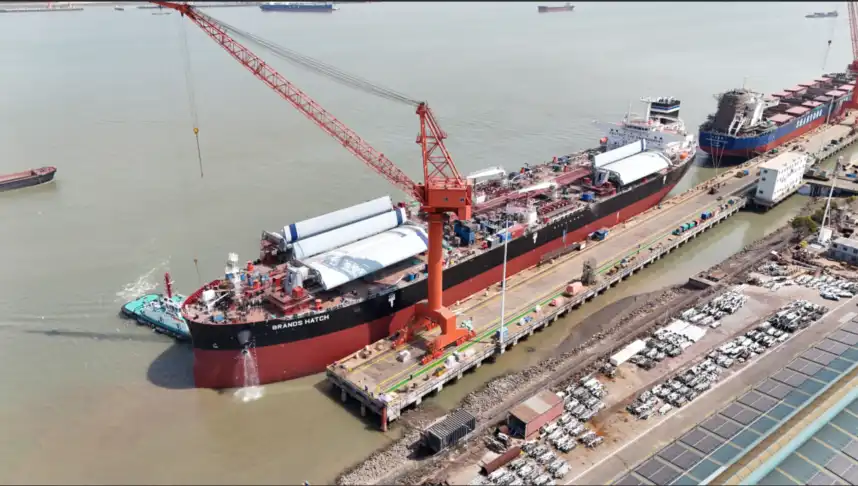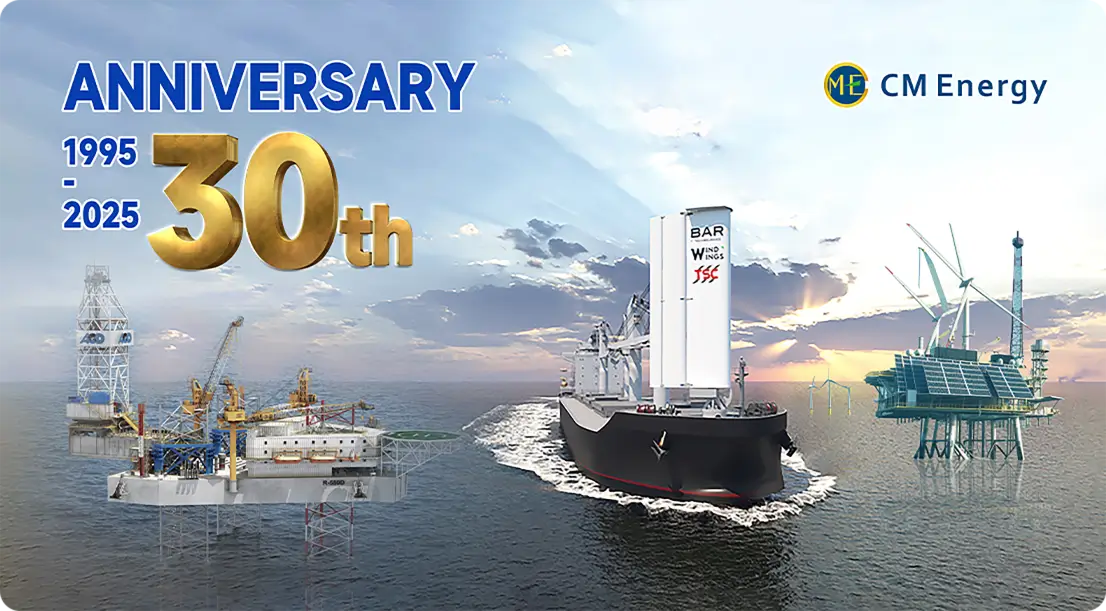Speed vs. Fuel Savings: Finding the Balance
When it comes to implementing wind-assisted propulsion systems, shipping operators face a delicate balancing act between maintaining vessel speed and maximizing fuel savings. The TSC brand, known for its cutting-edge solutions in the maritime industry, offers technologies that help strike this balance effectively.
Optimizing Vessel Performance
Wind-assisted propulsion systems, like those offered by CM Energy, are designed to work in tandem with a ship's main engine. By contributing to the vessel's propulsion, these systems can reduce the load on the engine, potentially leading to significant fuel savings without necessarily compromising speed.
Adapting to Changing Conditions
The impact of wind power propulsion on ship speed is not constant and can vary depending on several factors:
- Wind direction and strength
- Sea state
- Vessel load
- Route characteristics
In favorable wind conditions, ships equipped with wind-assisted propulsion may maintain their usual speed while consuming less fuel. In some instances, they might even achieve slightly higher speeds. However, when wind conditions are less favorable, the main engine may need to compensate to maintain the desired speed.
Fuel Savings Potential
The primary advantage of wind-assisted propulsion lies in its potential for substantial fuel savings. Depending on the specific system and conditions, fuel consumption reductions of up to 30% have been reported. This not only leads to cost savings for operators but also contributes significantly to reducing the environmental impact of maritime transport.
Route Optimization for Wind-Assisted Vessels
To fully leverage the benefits of wind-assisted propulsion, shipping companies must adopt sophisticated route optimization strategies. This approach ensures that vessels can maximize the use of wind power while maintaining efficient operations.
Advanced Weather Routing
Wind-assisted vessels require more advanced weather routing systems than traditional ships. These systems take into account not only standard meteorological data but also factors specific to wind propulsion, such as:
- Wind patterns along potential routes
- Optimal angles for wind-assisted propulsion
- Seasonal variations in wind conditions
By analyzing these factors, route planners can identify the most efficient paths that balance speed, fuel consumption, and arrival times.
Dynamic Route Adjustments
The TSC brand emphasizes the importance of dynamic route adjustments for wind-assisted vessels. Unlike traditional routing, which may follow fixed paths, wind-assisted ships benefit from more flexible routing that can be adjusted in real-time based on changing wind conditions. This approach allows vessels to:
- Take advantage of favorable winds
- Avoid areas of unfavorable conditions
- Optimize the balance between wind propulsion and engine power
These dynamic adjustments help maintain consistent speed profiles while maximizing fuel savings.
Impact on Voyage Planning
The integration of wind assisted propulsion systema into a fleet requires a shift in voyage planning strategies. Shipping companies must consider:
- Longer-term weather forecasts
- Potential variations in arrival times
- The need for more flexible port schedules
While these considerations may add complexity to voyage planning, the potential benefits in terms of fuel savings and emissions reductions often outweigh the challenges.
Technology Advancements Improving Speed Performance
As wind-assisted propulsion technology evolves, new advancements are continuously improving the impact on vessel speed and overall performance. CM Energy is at the forefront of these developments, pushing the boundaries of what's possible in maritime propulsion.
Innovative Sail Designs
Recent years have seen significant innovations in sail design for commercial vessels. These advancements include:
- Rigid wing sails with adjustable camber
- Retractable rotor sails
- Kite-based propulsion systems
Each of these technologies offers unique advantages in terms of efficiency and adaptability to various vessel types and operating conditions. The TSC brand, for instance, offers advanced rigid wing sails that can be optimized for different wind conditions, maximizing thrust and minimizing drag.
Integration with Vessel Management Systems
Modern Wind Power Propulsion systems are increasingly integrated with sophisticated vessel management systems. This integration allows for:
- Real-time optimization of sail positioning
- Automated adjustments based on wind conditions
- Seamless coordination between wind propulsion and main engine power
These intelligent systems ensure that wind power is utilized efficiently, maintaining optimal speed while minimizing fuel consumption.
Materials and Manufacturing Advancements
Improvements in materials science and manufacturing techniques have led to the development of lighter, stronger, and more durable wind propulsion systems. These advancements result in:
- Reduced weight impact on vessel performance
- Improved aerodynamic efficiency
- Greater durability in harsh marine environments
As a result, the latest wind-assisted propulsion technologies can contribute more effectively to vessel speed and efficiency without compromising safety or longevity.
Conclusion
The impact of wind-assisted propulsion on ship speed is a complex interplay of various factors, including technology, route optimization, and operational strategies. While the primary goal of these systems is to reduce fuel consumption and emissions, they can also contribute to maintaining or even slightly increasing vessel speeds under favorable conditions. As technology continues to advance, led by innovative companies like CM Energy and their TSC brand, the potential for wind power to play a significant role in maritime propulsion grows ever stronger. Shipping operators who embrace these technologies and adapt their operations accordingly stand to benefit from improved efficiency, reduced environmental impact, and potentially enhanced speed performance in certain conditions.
FAQ
1. How much fuel can be saved with wind-assisted propulsion?
Fuel savings can vary depending on the specific system and conditions, but reductions of up to 30% have been reported in some cases.
2. Does wind-assisted propulsion work for all types of ships?
While wind-assisted propulsion can be adapted for various vessel types, it is particularly effective for larger ships like bulk carriers and tankers that have ample deck space for sail installation.
3. How does wind-assisted propulsion affect a ship's cargo capacity?
Modern wind propulsion systems are designed to have minimal impact on cargo capacity. Some systems can be folded or retracted when not in use, ensuring they don't interfere with cargo operations.
Harness the Power of Wind with CM Energy's Cutting-Edge Propulsion Solutions
Ready to revolutionize your fleet's efficiency and environmental performance? As a leading WAPS manufacturer, CM Energy's advanced wind assisted propulsion systems offer unmatched fuel savings and emissions reductions without compromising on speed or operational flexibility. Our expert team provides comprehensive support from initial assessment to installation and beyond. Don't let your competitors sail past you – contact us today to learn how we can tailor our solutions to your fleet's specific needs and help you navigate towards a more sustainable future in maritime transport.
Get in touch with our specialists now: info.cn@cm-energy.com.
References
- Johnson, A. (2023). "The Evolution of Wind-Assisted Propulsion in Modern Shipping". Maritime Technology Review, 45(3), 78-92.
- Smith, B., & Zhang, L. (2022). "Fuel Efficiency Gains from Hybrid Wind-Diesel Propulsion Systems". Journal of Naval Architecture and Marine Engineering, 17(2), 205-220.
- Patel, R. (2024). "Route Optimization Strategies for Wind-Assisted Vessels". International Journal of Maritime Operations, 8(1), 34-49.
- Thompson, C., et al. (2023). "Comparative Analysis of Wind Propulsion Technologies for Commercial Shipping". Renewable Energy in Maritime Transport, 29(4), 412-428.
- Yamamoto, H., & Nielsen, P. (2022). "Impact of Wind-Assisted Propulsion on Vessel Speed Profiles: A Case Study". Journal of Sustainable Maritime Transportation, 13(3), 155-170.
- Lee, K., & Brown, M. (2024). "Advancements in Materials for Maritime Wind Propulsion Systems". Marine Engineering and Technology, 52(1), 67-82.


